Panels for finishing the walls of the kitchen, bathroom, corridor, living room
The number of finishing materials is growing from year to year. But wall panels for interior decoration have been known for a long time. Wood panels were first used for wall cladding, later other materials were added.
The content of the article
What are the wall panels for interior decoration (release forms)
Wall panels are a profitable finishing option. They can be mounted on a base of any curvature and appearance. When installing them, a long and difficult process of plastering and putty is not needed. Wall panels for interior decoration are attached to the lathing of wooden bars or metal profiles, thereby hiding any irregularities. This finishing material is produced in three types: in the form of sheets, plates and slats. Let's consider each type in more detail.
Rack panels for wall decoration
They have a small width. but considerable length. They are connected to each other according to the thorn-groove principle. There are slatted wall panels for interior decoration, in which the joints are hardly noticeable, there is a pronounced relief. From the peculiarities of installation: the lathing should be located in the direction perpendicular to the direction of laying. If you will mount the planks horizontally, the lathing should be vertical.
Manufactured from MDF, Chipboard, Fiberboard and plastic (PVC) are widely used. Rack PVC panels popular for budget wall and ceiling decoration in bathrooms, kitchens. Their disadvantage is fragility. Under mechanical stress, the plastic bends, in rare cases it can crack. For places with high humidity, MDF panels can be used (except for places of direct contact with water). Fibreboard and chipboard slatted panels are more suitable for dry rooms. They are distinguished by a much higher resistance to stress. Good for wall decoration in hallways, corridors, living rooms.
- Plastic panels for interior wall decoration - room for design ideas
- Rack panels for walls made of fiberboard - a budget option
Rack panels during installation are attached to the crate with self-tapping screws or brackets from construction stapler... There are also special fasteners: clamps. A clamp is attached to the crate, and it holds the rail with a protruding part - a tongue. In general, clamps are used to mount any type of interior wall panel. This is a convenient concealed installation system.
Installation of slatted wall panels can be carried out in a horizontal, vertical, inclined direction. Least waste when mounted vertically or horizontally. Although the slatted panels are of considerable length (from 2.4 m), there are still joints. There are special docking strips for their decoration. Special finishing elements are used to decorate the inner and outer corners, starting strips are used to decorate the edge of the trim.
In general, it should be said that slatted wall panels for interior decoration are a good choice. Their appearance is combined with ethnic styles, loft, modern, some classic trends. In fact, it all depends on the appearance of the panel. They can imitate wood, ceramic tiles, stone surfaces.Honestly, the imitation on PVC wall panels is "so-so". Even from a considerable distance, it can be seen that it is plastic. A woody relief looks more plausible on MDF slatted panels, a little worse on chipboard.
Wall slabs
Indoor wall panels are produced in the form of slabs. They are rectangular or square. The maximum size of square - 100 * 100 cm, rectangular - 120 * 80 cm From the peculiarities of installation - the crate must be made to fit the size of the plates. In some systems, the fragments are joined using joint profiles that are visible between the plates and may have a different color (most often, darker). Due to this, the wall looks more voluminous.
Slab wall panels for interior decoration are produced from MDF, chipboard, wood, plaster, metal (aluminum, painted or stainless steel). In our climate, metal wall panels for interior decoration are rarely used. But from MDF and chipboard - a popular finishing material for living quarters and corridors. They can be either smoothly painted in one color or imitate wood, stone or brickwork, ceramic tiles, concrete. Unlike plastic panels, the imitation is reliable, since the manufacturing technology allows you to make the surface not smooth, but textured.
Gypsum wall panels have a deep texture. This is the material called volumetric or 3D panels. Due to the high plasticity of gypsum, you can create a surface of any shape. Such plates are white, but they can be painted.
Sheet wall decoration material
Sheet wall panels for interior wall decoration have solid dimensions - the height is from 220 mm to 300 mm, the width is usually 125 cm. Their advantage is that you can find such a size so that the slab occupies an area from floor to ceiling. In width, most likely, they will have to be joined, but the joints are designed as a finish, so it looks good. Of the features of the installation - with small irregularities on the wall, they can be attached directly to the wall, without the lathing device.
Sheet wall panels are made of PVC, laminated chipboard and fiberboard, MDF. Plastic sheet panels are good for wet rooms - bathroom, kitchen. They often imitate ceramic tiles, brick and masonry. The required relief is formed on the plastic, so this imitation looks quite believable. There are also sheet plastic panels with photo printing. They are often used as a backsplash for kitchen work walls instead of ceramic tiles.
Sheet wall panels made of laminated fiberboard are one of the budget options for interior decoration. Most often imitates wood, but can be found under brick and masonry, smoothly colored. Due to the hygroscopicity of the material, they are used only in dry rooms - a corridor, living rooms.
MDF sheet boards can be used in conditions of high humidity, chipboard finishing material is suitable for decorating rooms with normal humidity. In texture and color, there are all the same options: imitation of wood, masonry and brickwork, smooth-colored sheets. MDF wall plates can be with a relief pattern (3D). But, unlike gypsum, they cannot be painted.
Characteristics and area of application by type of material
We will not talk about PVC panels. There is a separate article about them with a detailed description of the installation technology on walls and ceiling... At this point, we will consider wall panels for interior decoration from other materials. There are more than enough of them. There are the usual MDF and chipboard, there are exotic bamboo, glass, metal.
MDF panels
Finishing wall panels based on MDF are available in three forms of production: rack, slab and sheet. Their surface can be finished with veneer or laminated (pasted over with foil), painted. The surface can be smooth or embossed, the color can be any, even in flowers. Most often, MDF panels imitate a wooden surface (it can be a natural wood color, lightened, tinted in different colors).
- Traditional panels can be made from MDF wall panels.
- This option is also not bad.
- In classic interiors, MDF wall panels with imitation of valuable types of wood are used: veneered MDF can hardly be distinguished from solid wood
- Color variations - wood grain, smooth painted
- Wild Stone Color Options
- Brick, stone, vegetable drawing ... whatever you want
- Veneer can be tinted in different shades
The option with brickwork is also popular, masonry is a little less common. There are also plain-colored colors and, although they are presented in even cheaper materials such as fiberboard and particleboard, they are still bought. There are reasons for this:
- MDF is one of the safest materials. It is formed from wood waste ground to fibers, and then pressed at a high temperature. Under these conditions, a natural binder is released - lignin, which is contained in wood fibers. If there is not enough binder, a binder previously isolated from other rocks is added. Therefore, MDF is considered a natural finishing material, it is allowed for use in children's and medical institutions (the formaldehyde emission coefficient of this material is not higher than E1).
- MDF is not afraid of high humidity, reacts little to temperature changes. Therefore, MDF wall panels for interior decoration can be used in rooms with high humidity, but not where there is direct contact with water.
- You can form a relief of any complexity. Simpler patterns are formed during pressing, more voluminous and complex ones - using a router. This technology is used to make 3D MDF wall panels.
- Wall panels MDF with 3D effect - stylish
- The drawing can be any ... vegetable, geometric, fantasy
- The drawing can be like this
- If you also add metallized paint ...
- Accent wall made of volumetric MDF panels for wall decoration
- There are even carved
- Several options with 3D MDF wall panels
This material still has a drawback: it costs a lot. The price depends on several factors:
- Density.
- Material thickness.
- Difficulties in shaping and painting.
The minimum price is from $ 30 per square meter, the maximum price is up to several hundred dollars. But here you also need to understand that MDF wall panels are for different purposes. There is for wall decoration. They have a high density and thickness (from 8 mm thick). Minimum price from $ 40. For finishing the ceiling. You can take thin ones (from 6 mm), since there is practically no mechanical stress. But the following fact must be taken into account: the thinner the MDF, the more often you need to put suspensions (fasteners). Otherwise, MDF panels can bend under their own weight. Fasteners cost money, so the savings, if possible, are negligible. But spend more time on work.
Chipboard wall panels
Chipboard panels for wall decoration are made of sheet and slab type. The material has a low resistance to humidity, so it is used exclusively in rooms with normal humidity. It also reacts badly to the cold, therefore, it is not used on unheated loggias and balconies, baths, summer cottages.
In the manufacture of chipboard, an artificial binder containing formaldehyde is used.In high concentration, this substance is dangerous, because the production of the material is controlled by the sanitary and epidemiological station. Each batch of material is tested, according to the results of laboratory tests, a hygienic certificate is issued with the specified emission class. Excellent indicator - Super E and E1 (like natural wood), acceptable - E2. It is better not to use anything higher (more than a number) at home.
Particleboard wall panels for interior decoration are available laminated (covered with a film) or veneered. Their assortment is not so wide - the material is weakly plastic, therefore the plates are mostly smooth. Only a few manufacturers have modern equipment that allows you to shape the relief. But, even with new equipment, the maximum that can be formed is imitation of brickwork, ceramic tiles, wood texture.
The fastening can be secret - with the help of clamps - or self-tapping screws. When fastening with self-tapping screws, holes of a smaller diameter are pre-drilled in the material. And we must remember that reinstalling the same fasteners will not work. It is necessary to use a larger diameter, as the material crumbles / crumbles and does not recover.
Gypsum panels for wall decoration
About 5 years ago, gypsum wall panels for interior decoration appeared on the market. This is an environmentally friendly finishing material, absolutely unreliable and hypoallergenic. Another advantage is its absolute incombustibility. It is as flammable as stones. All in all a good choice.
Production technologists allow making a relief of any complexity, so that such slabs have a curly front surface. They are also called 3D wall slabs. The types of relief are very different. Geometric patterns of varying complexity, curved lines, circles, floral motifs and all this in combination. There are a lot of options and variations. The production technology has almost no limitations. And all this variety is available in two versions:
- Made of pure plaster of Paris diluted with water. They can only be used in rooms with normal humidity, since gypsum is hygroscopic. When wet, it collapses. Scope - corridors, living quarters.
- Moisture resistant with hydrophobic additives. The additives reduce the absorbency so much that this type of finish can be used in rooms with high humidity. With some types of additives, they can be mounted in places of direct contact with water - near bathtubs, washstands. They can be installed in bathrooms as kitchen aprons.
In any case - moisture resistant or not - gypsum wallboards for interior decoration can be painted. This is perhaps the only option for painting. Any paint can be. Its type is selected for the tasks: if it is assumed that wet cleaning is required, the paint must be resistant to washing, if gypsum panels mounted on the walls of the pool are painted, paint with a waterproof effect is needed (or varnished over it).
- 3 D gypsum panels in the interior of the dining room, living room - what the doctor ordered ...
- Longitudinal or horizontal arrangement - choose yourself, square slabs 50 * 50 cm, as you turn, so be it
- Painting and lighting - the secret of a bright interior
- gypsum wall panels are suitable for floor painting
- One of the finest imitations of masonry - in gypsum panels
- If you paint a geometric pattern with paint with a metallized effect, choose the right lighting, the interior will be unforgettable
- Geometric abstraction is suitable for any premises
- Volumetric figures on 3D wall panels
- An unobtrusive drawing can be found in the bedroom
Installation of gypsum boards for wall decoration - with glue.If the surface is flat, you can directly on the wall, if there are drops, you need to either level the wall or mount the crate. Take universal glue, but see that it is suitable for the materials used and withstands sufficient load. One plate weighs about 2-4 kg. Not too much, but not too little.
The seams between the boards can be left, or a seamless surface can be made. The choice depends on the type of relief and the type of room. There are slabs that are clearly "square" so that the seams look attractive. Just take into account that it is better not to do them in the bathroom or kitchen - unnecessary problems when cleaning. There are no such problems with living rooms - there is no strong pollution here.
Bamboo trim panels
Not too common, but interesting option is bamboo wall panels for interior decoration. They are made from strips of bamboo that are then woven into slabs of different sizes. Then the material is pressed, painted and varnished. Such bamboo panels are suitable for interiors in ethnic style, moreover, with an oriental orientation. The resulting braid has different thicknesses - from 1 mm to 7 mm. Depending on the thickness, bamboo panels are glued to the ceiling (1-3 mm thick) or walls (4 mm and thicker).
- Several Kinds of Wicker Bamboo Wall Panels
- Bamboo braids go well with wood
- Different texture and weave
- The room can have an oriental style
- Bamboo wall panels for interior decoration in interiors
- Combined with bamboo wallpaper
- Bamboo and cork - also look organically side by side
There is also another technology for the production of bamboo wall panels. In this case, the stems are crushed to fibers, pressed at a high temperature. This is how 3D eco-panels are made from bamboo. Using the same technology, a similar material is produced from cellulose and cane. The variety of patterns here is no less than in gypsum counterparts, and the thermal conductivity is slightly less. Of the disadvantages - they do not belong to the category of non-combustible materials. And one more thing: they are produced in China, Thailand, there is no production in Russia yet.
- Eco-panels for interior decoration 3D made of bamboo cannot be distinguished from gypsum externally
- Drawings can be different
- Color matters too
The installation method for these volumetric finishing panels is with glue. The seams are putty and leveled. The surface can be painted, but first it must be covered with a primer - to reduce and level the absorbency and so that the paint is smoother. It is better to apply paint from a spray gun - the relief is difficult to paint over with a brush and completely impossible with a roller.
Metal panels for interior decoration
Wall panels for interior decoration are not used very often. Metal is not associated, its shine with the comfort of our home. Occasionally they can be seen in hi-tech, loft, minimalism, art deco interiors. As a rule, they form an accent wall. In the most avant-garde interiors, metal wall panels can be seen on the ceiling.
High-tech uses polished or brushed stainless steel, loft and art deco - it can be painted or artificially "rusted" black steel. Steel slabs, but painted gray, black, red, can be minimalist.
Due to its resistance to water and moisture, stainless steel panels can be seen as a kitchen f
- For the daring - wall decoration in the bedroom with steel wall panels
- Aged copper is an excellent finishing material for the Art Nouveau style, loft
- Steel wall panels for interior decoration can also be different
- Copper decorative panels for rooms in the living room interior
- Most often, steel wall panels can be seen in the kitchen on the working wall
- Combined with tiles
- Another option for metal panels for kitchen veils
- For a study or office, perforated plates made of painted galvanized steel are suitable
- What can be metal finishing panels for rooms
artoka. In general, this is a good option for finishing balconies and loggias. There are metal panels covered with a layer of colored polymer. They are used for exterior decoration of buildings, so they are not afraid of anything on unheated balconies. By the way, there are corrugated metal panels that are perfect for a suspended ceiling in wet rooms (bathroom, pool) and will not interfere with ventilation.
Glass and mirrored
Wall panels for interior decoration made of glass and mirrors appeared several years ago. As a rule, they are mounted on previously painted surfaces, protecting them from moisture. This technique works well in rooms with high humidity - bathrooms, kitchens. Tempered glass is used, consisting of several layers held together by a transparent polymer. Such glasses are used as entrance doors. So as a wall decoration, they are safe.
- If the painted walls in the bathroom are covered with glass panels, this finish will not be demolished.
- With photo printing
- Not many interiors use glass wall panels for indoor use
- Mirrors are a great way to make the interior look unusual
- Reflection on glass breaks the space
- Patterned glass on a plain painted wall gives an interesting result
There are also new trends - photo printing on glass. With the help of new technologies, any drawing or even photograph is applied to glass. Since such decorative panels still remain translucent, the wall must be painted over. But the choice of color and tone depends on the desired effect.
Another non-standard type of wall panels is made of mirrors. They are also made from durable, film-glued sheets. Making a wall completely mirrored isn't always a good solution, but making stripes - vertical or horizontal - is an interesting idea. The interior immediately becomes fashionable and dynamic.

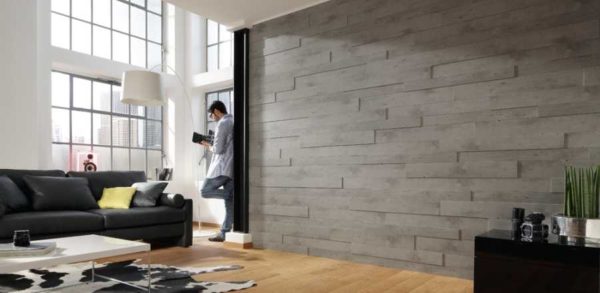
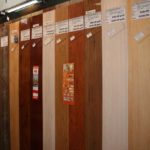
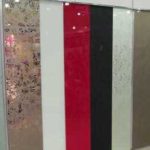
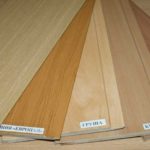
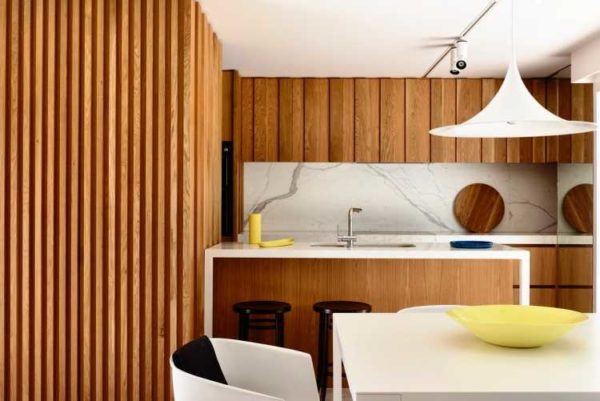
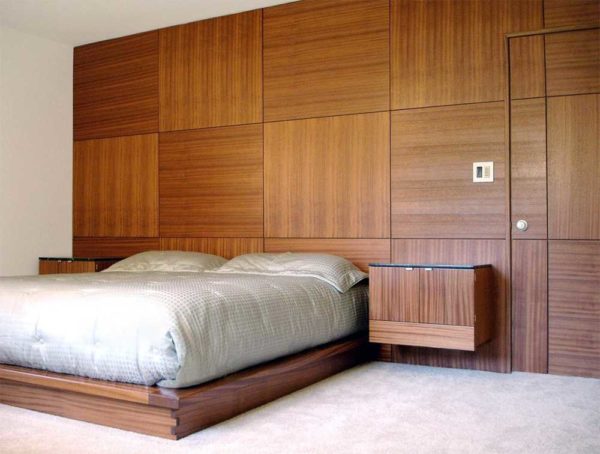
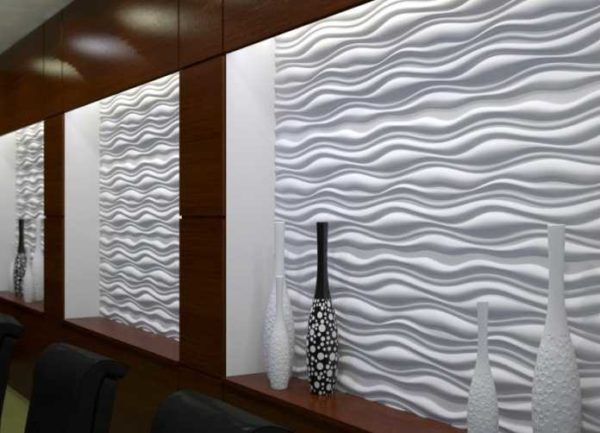
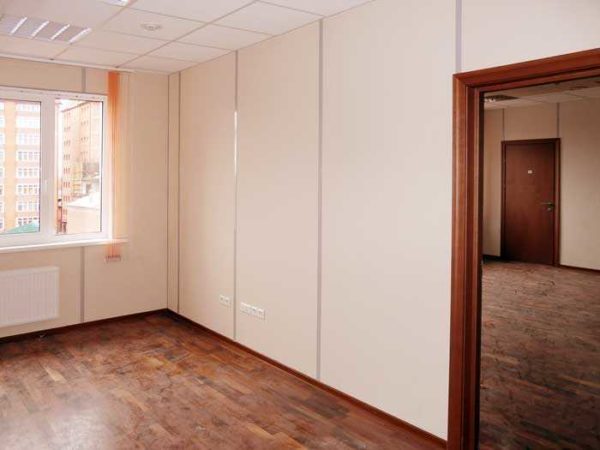
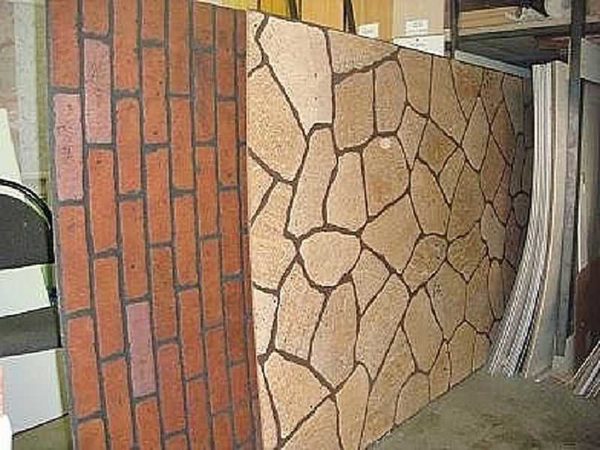
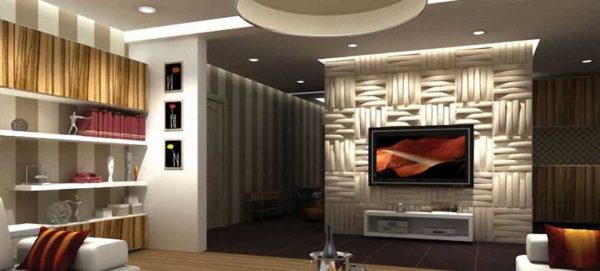
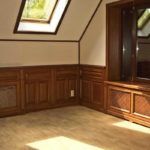
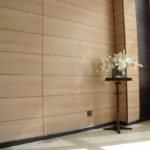
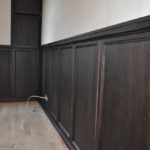
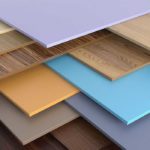
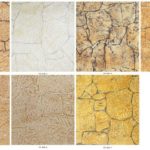
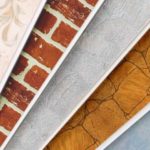
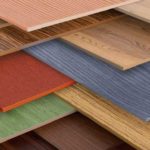
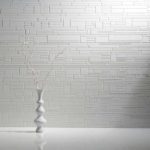
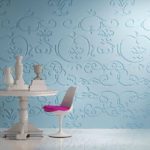
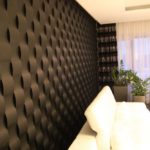
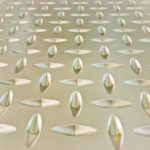
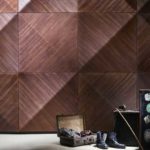
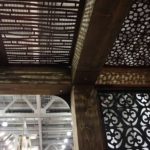
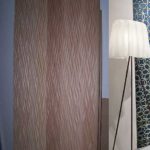
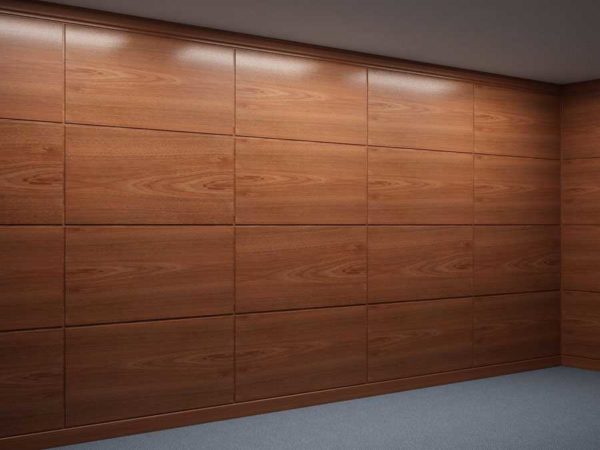
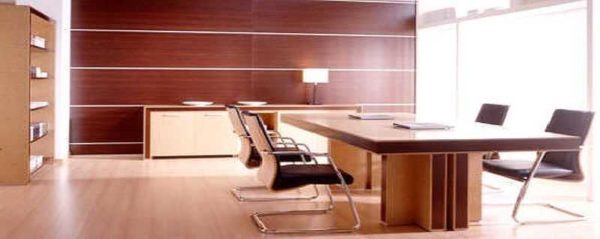

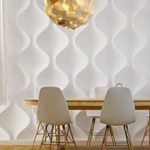
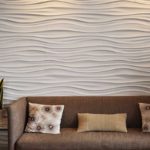
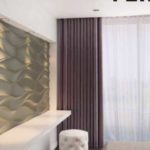
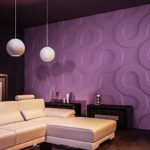
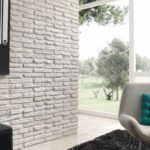
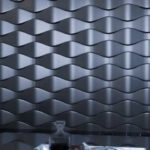
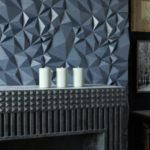
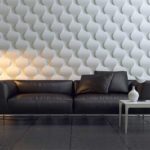
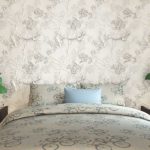
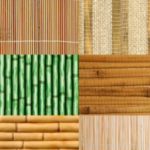
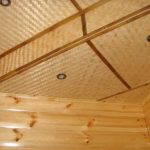
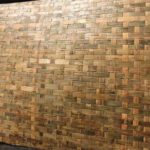
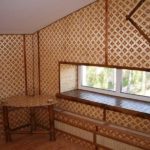
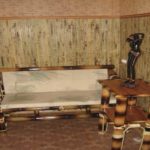
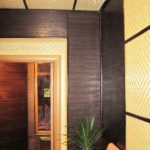
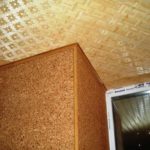
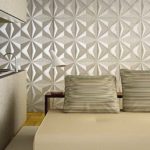
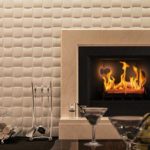
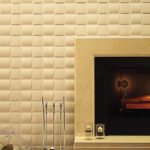
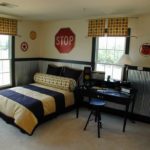
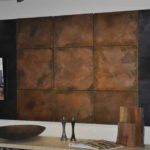
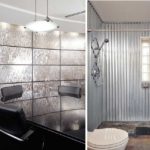
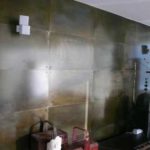
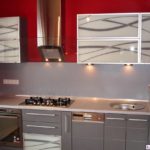
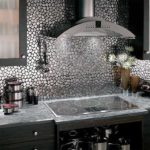
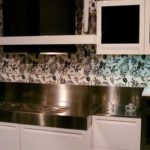
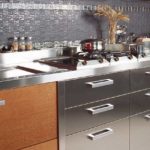
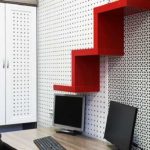
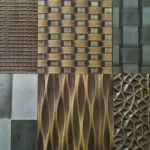
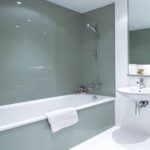
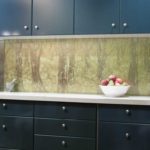
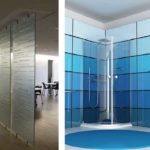
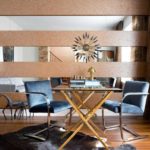
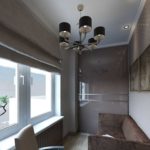
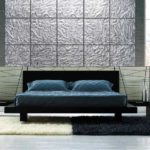

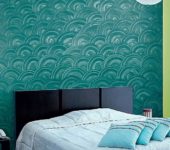
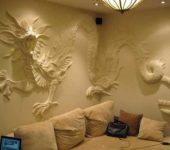
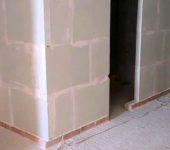
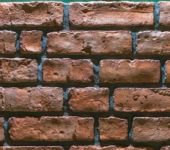





Good day! I am interested in the price: Rack wall panels based on met-th profile with veneer finish (DALHEM RIBBA-WAL) for 1m2
Good day.
Requires fire-rated wall cladding panels
Hello Oleg!
We have an informational site, we do not trade panels.